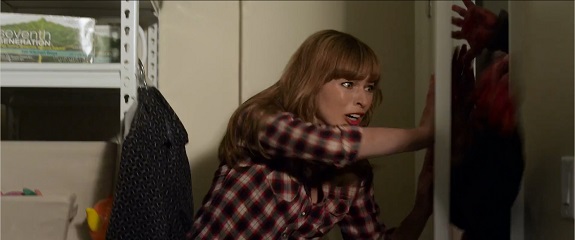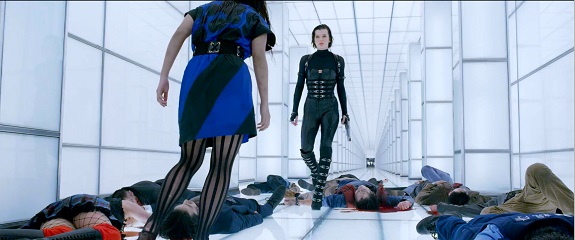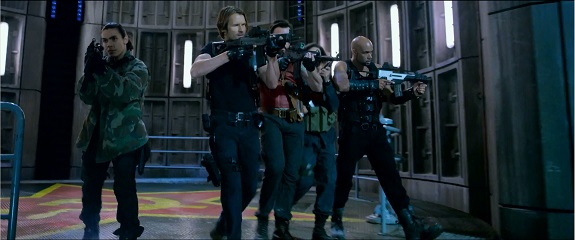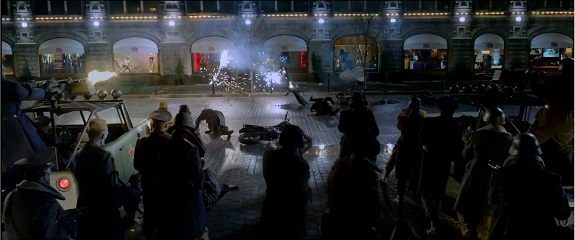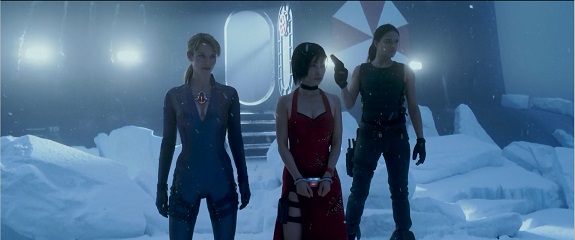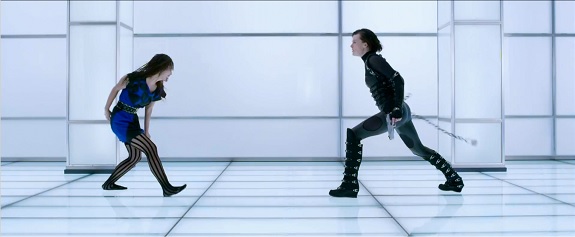
Unlike myself, Mr Moth has played and is a fan of the original Resident Evil games the movies are based on. Therefore he’s considerably more hacked off at them than I was, though I can certainly agree with much of his criticism:
3) Paul WS Anderson really believes the Umbrella Corporation is staggeringly incompetent.
Umbrella manage to wipe out nearly every human in existence but to what end? They’re a business and the undead are not a target market. By the fifth film it’s clear that the Red Queen is intent on destroying humanity. The problem is that humanity is well on its way to total extinction by the time of, well, Extinction. Las Vegas is a ruin, buried by the Nevada desert in just five years. There’s no coming back from that, but still Umbrella hold board meetings and employ receptionists (exactly how were they recruiting their staff? “Are you a zombie?” “No.” “Welcome to Umbrella.”). Their long-term plan made no sense, and it’s worth noting that in the games, humanity is in much better nick.
But that’s ok, because they were never going to benefit from it, anyway. Every single one of their developments got away from them in one way or another. The Red Queen goes rogue and kills everyone. The Nemesis turns goodie. The super-secret exit to their bioweapons lab is besieged by thousands of zombies, kept at bay by the thinnest of chainlink fences. The airtight lab they store their highly infectious weaponised virus in has aircon vents that link directly to the offices. If their underwater base loses power, all their soldiers go to sleep during the power cut. They leave hundreds of clones lying around of their most powerful enemy.
The Resident Evil movies really only make sense as spectacles, especially after the first one, which I still think was a rather good suspense horror movie even if there were plot holes there you could drive a zombie horde through. The overall story arc doesn’t make much sense and Umbrella has to be the most incompetent, pointlessly evil corporation in the world.
And yet, having watched all five movies over the last two months, these are still entertaining movies that have the redeeming feature of starring strong, female characters who aren’t undermined by their male costars, hold their own without becoming the usual bad girl cliche. It can be so much worse, as a look at the Underworld series, that other naughties action horror with female lead franchise, shows.
